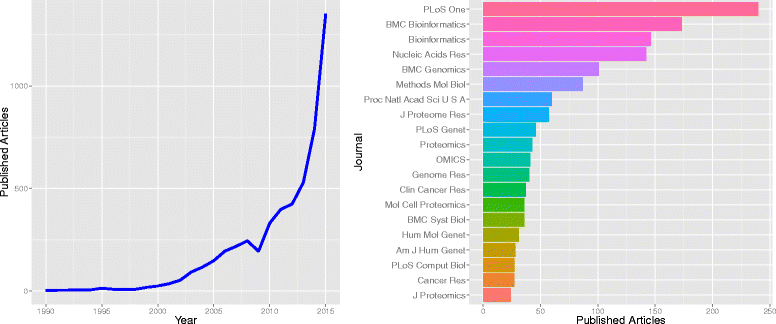Joint analysis of multiple phenotypes: summary of results and discussions from the Genetic Analysis Workshop 19
- PMID: 26866608
- PMCID: PMC4895558
- DOI: 10.1186/s12863-015-0317-6
Joint analysis of multiple phenotypes: summary of results and discussions from the Genetic Analysis Workshop 19
Abstract
For Genetic Analysis Workshop 19, 2 extensive data sets were provided, including whole genome and whole exome sequence data, gene expression data, and longitudinal blood pressure outcomes, together with nongenetic covariates. These data sets gave researchers the chance to investigate different aspects of more complex relationships within the data, and the contributions in our working group focused on statistical methods for the joint analysis of multiple phenotypes, which is part of the research field of data integration. The analysis of data from different sources poses challenges to researchers but provides the opportunity to model the real-life situation more realistically.Our 4 contributions all used the provided real data to identify genetic predictors for blood pressure. In the contributions, novel multivariate rare variant tests, copula models, structural equation models and a sparse matrix representation variable selection approach were applied. Each of these statistical models can be used to investigate specific hypothesized relationships, which are described together with their biological assumptions.The results showed that all methods are ready for application on a genome-wide scale and can be used or extended to include multiple omics data sets. The results provide potentially interesting genetic targets for future investigation and replication. Furthermore, all contributions demonstrated that the analysis of complex data sets could benefit from modeling correlated phenotypes jointly as well as by adding further bioinformatics information.
Figures


Similar articles
-
Multivariate analyses of blood pressure related phenotypes in a longitudinal framework: insights from Genetic Analysis Workshop 18.Genet Epidemiol. 2014 Sep;38 Suppl 1:S63-7. doi: 10.1002/gepi.21827. Genet Epidemiol. 2014. PMID: 25112191
-
Longitudinal analytical approaches to genetic data.BMC Genet. 2016 Feb 3;17 Suppl 2(Suppl 2):4. doi: 10.1186/s12863-015-0312-y. BMC Genet. 2016. PMID: 26866891 Free PMC article.
-
Powerful rare variant association testing in a copula-based joint analysis of multiple phenotypes.Genet Epidemiol. 2020 Jan;44(1):26-40. doi: 10.1002/gepi.22265. Epub 2019 Nov 15. Genet Epidemiol. 2020. PMID: 31732979
-
Multivariate analysis of complex gene expression and clinical phenotypes with genetic marker data.Genet Epidemiol. 2007;31 Suppl 1:S103-9. doi: 10.1002/gepi.20286. Genet Epidemiol. 2007. PMID: 18046768 Review.
-
The Molecular Revolution in Cutaneous Biology: The Era of Genome-Wide Association Studies and Statistical, Big Data, and Computational Topics.J Invest Dermatol. 2017 May;137(5):e113-e118. doi: 10.1016/j.jid.2016.03.047. J Invest Dermatol. 2017. PMID: 28411841 Free PMC article. Review.
Cited by
-
Bivariate logistic Bayesian LASSO for detecting rare haplotype association with two correlated phenotypes.Genet Epidemiol. 2019 Dec;43(8):996-1017. doi: 10.1002/gepi.22258. Epub 2019 Sep 23. Genet Epidemiol. 2019. PMID: 31544985 Free PMC article.
-
Genetic Analysis Workshop 19: methods and strategies for analyzing human sequence and gene expression data in extended families and unrelated individuals.BMC Proc. 2016 Oct 18;10(Suppl 7):67-70. doi: 10.1186/s12919-016-0007-z. eCollection 2016. BMC Proc. 2016. PMID: 27980613 Free PMC article.
-
Bivariate quantitative Bayesian LASSO for detecting association of rare haplotypes with two correlated continuous phenotypes.Front Genet. 2023 Mar 9;14:1104727. doi: 10.3389/fgene.2023.1104727. eCollection 2023. Front Genet. 2023. PMID: 36968609 Free PMC article.
-
Omics-squared: human genomic, transcriptomic and phenotypic data for genetic analysis workshop 19.BMC Proc. 2016 Oct 18;10(Suppl 7):71-77. doi: 10.1186/s12919-016-0008-y. eCollection 2016. BMC Proc. 2016. PMID: 27980614 Free PMC article.
References
Publication types
MeSH terms
Grants and funding
LinkOut - more resources
Full Text Sources
Other Literature Sources

